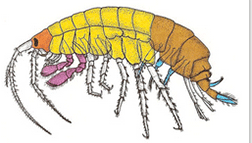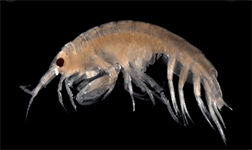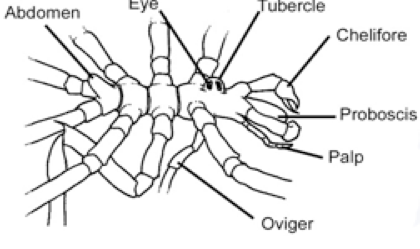

Before we begin to look at Cnidarians, we will look at some arthropods of interest often associated with their colonies.
Skeletal shrimp are highly modified unique amphipods, so crustaceans.
Typical amphipods----------

These are truly spectacular creatures to watch feed and move. They grow to be between one-half inch to two inches in length. Males are generally larger than females in most species and females hold the eggs in brood pouches on their body. Re-read the guide to Arthropods with regard to Crustacean characteristics.


View the films below to see how they locomote. Also see if you can identify major characteristics of anatomy.
More information https://softschools.com/facts/animals/skeleton_shrimp_facts/1873/ Not all species are venomous and females do not kill males in all species.
For this lab we usually receive the purple striped barnacle, Balanus amphitrite and an unidentified species (probably another species of Balanus). Barnacles are crustaceans. Barnacles are filter feeders using their modified feathery legs to filter particles from the water. Barnacles can have various types of larvae but one form in particular the nauplius, resembles the larvae of many other crustaceans.

The larvae when ready to settle down, secures itself head-first to the surface. The larvae begins to secrete the calcium-hard plates which totally encase them. With jointed modified legs, cirri, which also sport gills, they collect plankton.

Barnacles feeding
Most barnacles are hermaphrodite. A retractable tube containing sperm (acting as a penis) reaches outside the shell as far as several inches to fertilize a nearby barnacle. Genetic testing has indicated that near neighbors are not often chosen as the most suitable mates.
Barnacles mating
For more information on barnacles. https://en.wikipedia.org/wiki/Barnacle
Re-read Arthropods 2 and using that information, and the diagrams below, identify prominent characteristics in the films provided.
Dorsal surface showing proboscis, eyes and chelifores (appendages used

to tear bits of food).Ventral surface showing oviger (used by males to carry eggs) and gonopores or opening to reproductive organs.
